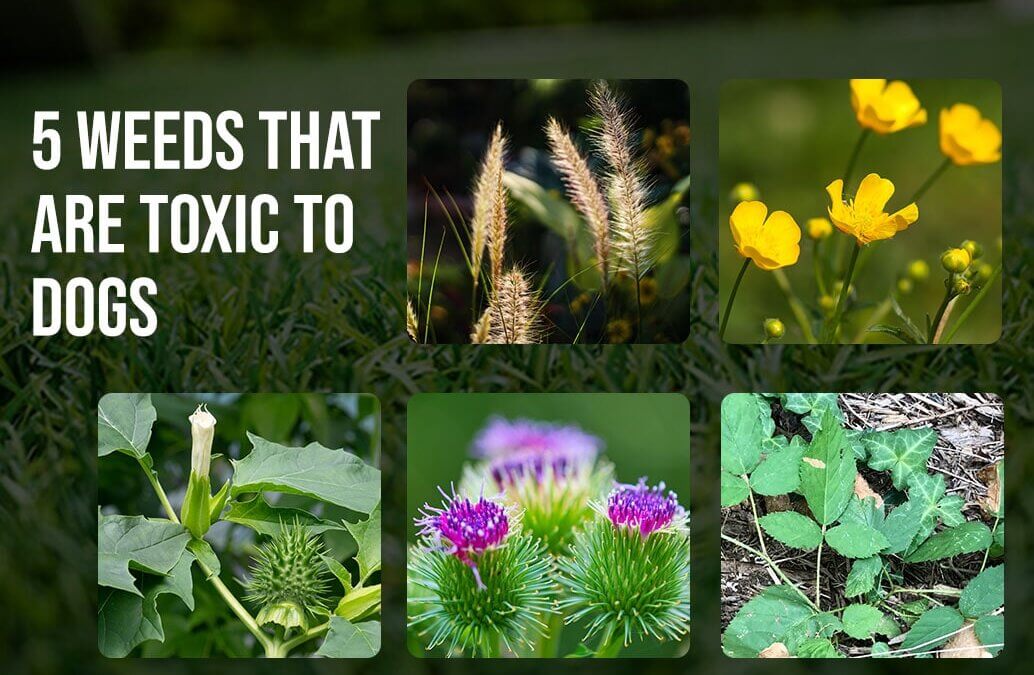As a devoted pet parent, you understand the importance of keeping your furry friends safe. When it comes to maintaining a beautiful garden, it’s crucial to be aware of the dangers that certain weeds and weed killers can pose to pets. With the right knowledge and tools, however, you can protect your pets and keep your garden looking its best. Let’s dive into the essentials of using pet-safe weed killer sprays.
Key Takeaways
Identify common garden weeds that may be harmful to pets.
Understand what makes a weed killer pet-safe, including key ingredients to look for.
Learn safe application practices to prevent pets from coming into contact with harmful chemicals.
Discover natural and organic pet-safe weed killer options.
Recognize the importance of maintaining a pet-friendly garden and alternatives to chemical weed killers.
“Artificial Pet Turf …” from orlandoartificialgrasspros.com and used with no modifications.
What Makes a Weed Killer PetSafe?
When you’re browsing the aisles for a weed killer, the safety of your pets is a top priority. A pet-safe weed killer is one that is non-toxic and poses no harm to your pets when used according to the label’s instructions. These products typically contain natural or organic ingredients that are less likely to irritate or harm your pets.
But remember, just because a product is labeled as ‘natural’ or ‘organic’ doesn’t automatically make it safe for your furry family members. It’s the specific ingredients and their concentrations that determine safety. Therefore, always read the label carefully before purchasing and using a weed killer in your garden.
Defining PetSafe Herbicides
So, what exactly are pet-safe herbicides? These are weed-killing formulas designed to target unwanted plants without the harsh chemicals found in traditional herbicides. They’re crafted to break down quickly in the environment, reducing the risk of exposure to your pets.
Key Ingredients to Look For
When selecting a pet-safe weed killer, look for ingredients such as:
Vinegar (acetic acid) – effective at killing young, annual weeds
Citrus oil – works as a natural desiccant
Corn gluten meal – prevents weed seeds from germinating
Soap-based herbicides – help to penetrate and break down plant waxy surfaces
These ingredients are not only effective at controlling weeds but also tend to be safer options for use around pets.
Common Garden Invaders: Know Your Weeds
Before you reach for any weed killer, it’s crucial to know what you’re dealing with. Some common garden invaders can be more than just an eyesore; they may also be toxic to pets. Weeds like foxtail, sago palm, and lilies can cause serious health issues if ingested by your pet.
Most importantly, by identifying the specific weeds in your garden, you can choose the most effective pet-safe weed killer and apply it more strategically. This not only saves you time and resources but also minimizes the risk of your pets encountering harmful plants.
Identifying Harmful Weeds
To identify harmful weeds, you might want to consult with a local gardening expert or use a plant identification app. Once you know what you’re dealing with, you can take the appropriate steps to remove these weeds safely.
Toxicity Levels and Your Pet’s Health
Different weeds have varying levels of toxicity. Some may cause mild gastrointestinal upset, while others can be potentially fatal. It’s vital to recognize the signs of poisoning, which can include vomiting, diarrhea, lethargy, or more severe symptoms like seizures.
If you suspect your pet has ingested a toxic plant, contact your veterinarian immediately. Quick action can make all the difference.
Keeping Your Pets Out of Harm’s Way
When it comes to using weed killers, it’s all about safe application. Always follow the product’s instructions to the letter. This usually involves keeping pets off the treated area for a certain period, often until the product has dried or been absorbed into the soil. For more information on keeping your pets safe in the garden, check out safe gardening tips.
Understanding labels and safety instructions is not just a formality—it’s a critical step in ensuring your pet’s safety. Look for labels that provide clear guidelines on how to use the product around pets, and don’t hesitate to contact the manufacturer if you have any doubts or questions.
Understanding Labels and Safety Instructions
Let’s get one thing clear: not all products marketed as ‘safe for pets’ are created equal. The label is your best friend when determining the true safety of a weed killer. It’s not just about what’s in the bottle; it’s about how those ingredients interact with the environment and, most importantly, with your pets. Labels will tell you the necessary precautions to take, such as waiting times before allowing pets back onto the treated area.
For instance, a label might instruct you to keep pets away until the product has thoroughly dried. This is because wet chemicals can stick to your pet’s paws or fur, which they might lick off later. So, if the label says to wait, make sure you wait—it’s not worth the risk.
Example: The label on EcoMight’s PetSafe Weed Terminator states, “Keep pets and children out of the area during application and until the spray has dried completely.” This clear instruction is your cue to plan a short pet playdate elsewhere until it’s safe to return.
The Go-To List of PetSafe Weed Killer Sprays
When you’re in the market for a pet-safe weed killer, there are several reliable options you can trust. Products like Green Gobbler Vinegar Weed & Grass Killer and Doctor Kirchner Natural Weed Killer have gained popularity for their effectiveness while being safe for pets when used correctly.
Natural & Organic Options
If you’re leaning towards natural and organic options, there are plenty to choose from. These solutions often use ingredients like vinegar, citric acid, or essential oils to tackle weeds without harsh chemicals. They’re not only better for your pets but also for the environment.
Vinegar-based sprays – Acidity kills weeds on contact.
Citrus oil extracts – Act as a natural herbicide.
Iron-based solutions – Target broadleaf weeds while being safe for grass and pets.
Remember, ‘natural’ doesn’t mean ‘weak’. Many of these organic solutions are incredibly effective at managing weeds, so don’t underestimate their power.
Store-Bought vs. Homemade Solutions
While store-bought pet-safe weed killers are convenient and often come with specific application instructions, you might also consider homemade solutions. A simple mixture of vinegar, dish soap, and salt can be quite effective against weeds. But exercise caution—homemade mixtures can be harmful to soil health and other plants if not used carefully.
It’s a balancing act: store-bought options are scientifically formulated for safety and efficacy, while homemade solutions give you control over the ingredients. Whichever route you choose, always prioritize your pet’s safety.
Preventive Measures in the Garden
Prevention is always better than cure. By creating an environment that’s less conducive to weeds, you’ll reduce the need for weed killers in the first place. Dense, healthy grass and ground cover can prevent weeds from taking root, while mulching garden beds can suppress weed growth.
Maintaining a Pet-Friendly Garden
Maintaining a pet-friendly garden goes beyond weed control. It’s about creating a space where your pets can play and explore without risk. This includes using pet-friendly weed control methods.
Choosing plants that are non-toxic to pets.
Using physical barriers to protect both pets and plants.
Regularly inspecting your garden for any new, potentially harmful weeds.
By taking these steps, you’re not just keeping your garden beautiful—you’re also ensuring it’s a safe haven for your pets.
Alternatives to Chemical Weed Killers
Besides pet-safe sprays, there are other ways to manage weeds without chemicals. Boiling water can be poured directly onto weed foliage to scald them. Physical removal, though labor-intensive, is a surefire way to get rid of weeds without any risk of chemical exposure. And let’s not forget about landscaping fabric, which can be used to block sunlight and prevent weed growth.
Application and Aftercare Tips
When you do need to use a weed killer, timing and technique are everything. Early morning or late evening applications can reduce the risk of your pets accidentally coming into contact with the product. Using a targeted sprayer can help you avoid overspray onto plants that your pets may interact with.
Aftercare is just as important. Once the waiting period on the label has passed, give the treated area a good watering to help dilute any remaining residue. And always store weed killers out of reach to prevent any curious pets from finding them.
Keeping your pets safe outdoors requires a mix of vigilance, knowledge, and the right products. With pet-safe weed killer sprays, you can enjoy a weed-free garden without compromising the health and happiness of your furry friends.
When and How to Safely Apply Weed Killers
Applying weed killers in a pet-safe manner is all about timing and precision. You’ll want to apply these products when your pets are indoors or away from the area being treated. Early morning or late evening applications are typically best, as they allow the product to settle during times when your pets are less likely to be outdoors.
Use a targeted sprayer to apply the weed killer directly onto the weeds, avoiding any unnecessary overspray. This helps protect the surrounding plants and reduces the chance of your pets coming into contact with the treated areas. And, of course, always wear protective gear as recommended on the product label to safeguard your own health.
Post-Application: Keeping Pets Safe
After applying a pet-safe weed killer, the next crucial step is to ensure the safety of your pets post-application. Adhere strictly to the waiting period specified on the product label—this is usually the time it takes for the product to dry or be absorbed into the soil. Once this period has passed, give the treated area a thorough watering to help any residual product seep further into the soil, away from your pet’s curious noses and paws.
It’s also wise to keep an eye on your pets for a while after they’re allowed back into the treated area, just to be sure they’re not showing any signs of distress or illness. If you notice anything out of the ordinary, contact your veterinarian immediately.
Frequently Asked Questions (FAQ)
How Long After Spraying Is It Safe for Pets?
The safe waiting period after spraying a weed killer can vary depending on the product used. Generally, you should keep pets away from the treated area until the product has dried completely. This can take anywhere from a few hours to 24 hours. Always check the label for the manufacturer’s specific recommendations. For more information on pet safety and weed killers, consider reading Is Weed Killer Safe for Pets? What to Know.
Can Pets Eat Plants Treated with PetSafe Weed Killers?
Even if a weed killer is labeled as pet-safe, it’s best practice to prevent your pets from eating any treated plants. While these products are safer than their chemical-laden counterparts, ingestion could still potentially cause mild stomach upset. Encourage your pets to play and explore away from treated areas, and keep an eye on them to ensure they’re not nibbling on the foliage.
Are There Pet-Safe Weed Killers Effective Against All Weeds?
No single weed killer can claim to be effective against all types of weeds. Pet-safe weed killers, like all herbicides, are formulated to target specific weed species or groups. For best results, identify the weeds in your garden and choose a product that’s designed to target them. If you’re dealing with a variety of weeds, you may need to use multiple products or methods to get the job done.
How Often Should PetSafe Weed Killers Be Applied?
The frequency of application for pet-safe weed killers will depend on the product’s formulation and the severity of your weed problem. Some natural herbicides may require more frequent application than traditional chemical weed killers. Always follow the label’s instructions for reapplication intervals to avoid overuse and potential harm to your garden’s ecosystem.
What Are the Signs of Weed Killer Poisoning in Pets?
If your pet has been exposed to weed killer, they may exhibit symptoms such as excessive drooling, vomiting, diarrhea, lethargy, or difficulty breathing. In severe cases, they may have seizures or show signs of organ failure. If you suspect your pet has been poisoned, contact your veterinarian or an emergency animal hospital immediately. Providing details about the product used and any symptoms observed can help with quick and effective treatment.






